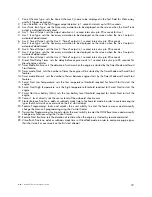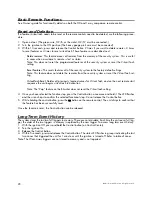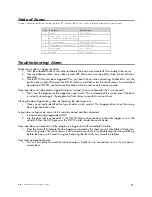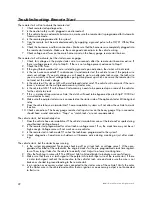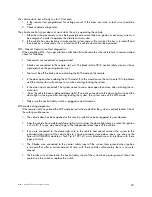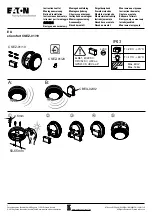
21
© 2011 Directed Electronics. All rights reserved.
Table of Zones
A zone is represented by the number of status LED flashes used by the system to identify a particular type of input.
Zone
Description
Input Description
1
Trunk Pin
H2/19 Blue wire
2
Instant trigger: a heavier impact
detected by the onboard shock sensor
Shock sensor.
3
Door switch trigger
H2/6 Green or H2/12 Violet wire
4
Instant trigger: For optional sensors
Optional MUX port
5
Ignition trigger
H3/1 Pink wire
6
Hood Pin
H2/17 Grey wire
Troubleshooting: Alarm
Shock sensor doesn’t trigger the alarm:
1. Was the onboard shock sensor adjusted before the brain was mounted? If so re-adjust the sensor.
2. Has the onboard shock sensor been turned off? The sensor has the ability to be turned off when
adjusting.
3. Has the NPC® system been triggered? If so, you hear 5 chirps when disarming. To check this, turn the
ignition key on and off to clear the NPC® memory, and then retest the shock sensor. For a detailed
description of NPC®, see Nuisance Prevention Circuitry section of the owners guide.
Door input does not immediately trigger full alarm. Instead, chirps are heard for the first 3 seconds:
•
That’s how the progressive two-stage door input works! This is a feature of this system even if the door
is instantly closed again, the progression from chirps to constant siren continues.
Closing the door triggers the system, but opening the door does not:
•
Have you correctly identified the type of door switch system? This happens often when the wrong
door input has been used.
System does not passively arm until it is remotely armed and then disarmed:
1. Is passive arming programmed ON?
2. Are the door inputs connected? Is the H2/19 blue wire connected to the door trigger wire in the
vehicle? Either the H2/6 green or the H2/12 violet should be used instead.
Door input does not respond with the progressive trigger, but with immediate full alarm:
•
Does the Status LED indicate that the trigger was caused by the shock sensor? (See
Table of Zones
sec-
tion of this guide.) The shock sensor, if set to extreme sensitivity, may be detecting the door unlatching
before the door switch sends its signal. Reducing the sensitivity can solve this problem.
Door locks operate backwards.
•
This unit has easily-reversed lock/unlock outputs. Recheck wire connections to see if you have re-
versed these.













